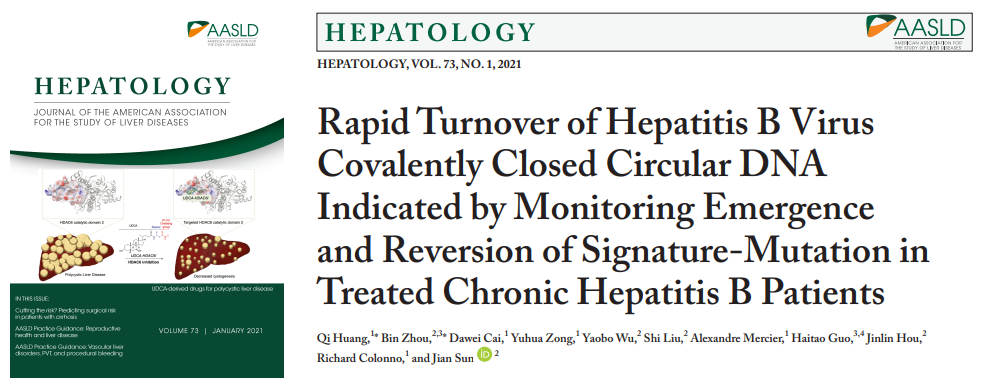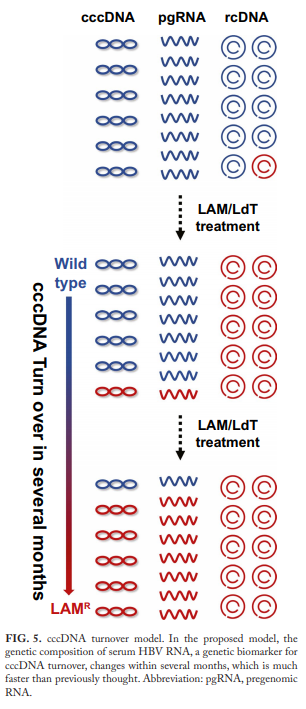Hepatology: The cccDNA update cycle only takes a few months
- Normal Liver Cells Found to Promote Cancer Metastasis to the Liver
- Nearly 80% Complete Remission: Breakthrough in ADC Anti-Tumor Treatment
- Vaccination Against Common Diseases May Prevent Dementia!
- New Alzheimer’s Disease (AD) Diagnosis and Staging Criteria
- Breakthrough in Alzheimer’s Disease: New Nasal Spray Halts Cognitive Decline by Targeting Toxic Protein
- Can the Tap Water at the Paris Olympics be Drunk Directly?
Hepatology: The cccDNA update cycle only takes a few months
Hepatology: The cccDNA update cycle only takes a few months. In this study, by monitoring the changes in the ratio of LAMR mutations in serum HBV RNA, it was speculated that the cccDNA update cycle would only take a few months, which overturned the previous belief that the cccDNA update cycle would take several years.

HBV covalently closed circular DNA (cccDNA) plays a key role in the establishment and continuation of HBV infection. It is important to clarify the renewal cycle of the cccDNA pool to guide the development of new hepatitis B drugs.
The team of Professor Hou Jinlin and Sun Jian from Southern Hospital of Southern Medical University, in collaboration with experts from Assembly Biosciences, Indiana University, and University of Pittsburgh, used two completed randomized controlled clinical research samples to determine the mutation site of lamivudine resistance (LAMR)— rtM204I/V is used as a marker, and the ratio of rtM204I/V resistant strains to wild strains is used to predict the renewal cycle of the cccDNA pool.
Firstly, HBV rcDNA, cccDNA and HBV RNA were extracted and amplified specifically from the liver tissue of the patient, and HBV DNA and HBV RNA were extracted and amplified from the serum at the corresponding time point, and then sequenced and analyzed. In matched liver and serum samples, the LAMR composition ratio of cccDNA has a strong correlation with the LAMR composition ratio of serum and intrahepatic HBV RNA (r values are 0.96 and 0.90, respectively), indicating that when liver biopsy cannot be performed, serum HBV RNA can be used as an indicator to replace cccDNA.
Further research found that in patients who received telbivudine treatment and had a virological breakthrough, it took 16 to 28 weeks for the serum HBV RNA LAMR mutation rate to increase from 0% to 40% to 90%. Similarly, after lamivudine-resistant patients switch to interferon therapy, the time for the proportion of serum HBV RNA LAMR mutations to recover from 100% to wild-type is 24 to 48 weeks.

In short, this study monitored the changes in the proportion of LAMR mutations in serum HBV RNA and inferred that the cccDNA update cycle would only take a few months, which overturned the previous belief that the cccDNA update cycle would take several years. This will greatly enhance our confidence in the cure of hepatitis B. In the future, through the strategy of multi-target combined therapy, the supplement of cccDNA will be completely blocked. The original cccDNA pool is expected to be cleared within a few months, so as to achieve a limited course of treatment to cure hepatitis B.
(source:internet, reference only)
Disclaimer of medicaltrend.org



